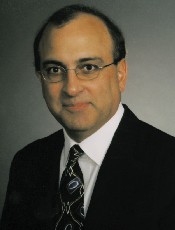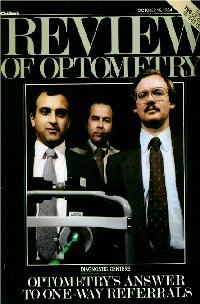Q. Where did the concept of comanagement originate, and how did it progress?

A. The concept of comanagement, as we know it today has only been around for about 20 years. It began when the first comanagement referral center opened in Atlanta.
In the 1970s, optometry and ophthalmology were battling over scope-of-practice laws. Optome-trists wanted to use diagnostic drugs for dilation and tonometry, but the legislature considered the interests of ophthalmology and optometry to be private and not under their jurisdiction.
I wanted to establish a network of referral systems for optometrists so that they could send patients to ophthalmologists who were not fighting us, says optometrist William Cuthbertson, of Cornelia, Ga., arguably the father of modern comanagement. These centers would focus on surgical care and disease management, and would not do anything that would compete with organized optometry.
Dr. Cuthbertson met with the chair of the Visual Education Foundation (VEF), an academic group at the Southern College of Optometry that was looking for a project to work on.
We wanted to set up a referral clinic that was controlled by op-tometrists and staffed with ophthalmologists. That way, O.D.s could send a patient to an ophthalmologist and actually get the patient back, says Dr. Cuthbertson. The VEF agreed and started the first referral center in a building at Shallow-ford Hospital in Atlanta.

The next step: find O.D.s to run the center. Dr. Cuthbertson says this proved a challenging task. Eventually, we recruited the best optometry residents from Bascom Palmer in Miami and a few VA hospitals, he says.
These residents founded the countrys first referral centers in Atlanta; Chattanooga, Tenn.; and Lexington, Ky. Before long, there were 15 such centers nationwide. The project grew so quickly that the VEF couldnt deal with it. Thats when Omni Eye Services bought the group, Dr. Cuthbert-son says.
It wasnt long before other organizations began opening optometric referral centers nationwide.
Q. Did this change the way optometrists and ophthalmologists work together?
The comanagement centers that Dr. Cuthbertson and his group established provided O.D.s access to ophthalmologists who were willing to work with optometrists.
A. Comanagement centers also showed various groups that optometrists and ophthalmologists can work together. For example, when O.D.s in Georgia were seeking TPA legislation, they invited members of the House and Senate to see the Atlanta Center. They passed that therapeutics bill so fast it would make your head swim. Upon visiting, it was easy to see that we were focused on patient care, Dr. Cuth-bertson says.
They offered multiple CE programs each week and allowed O.D.s to visit the center to observe surgical procedures.
A lot of O.D.s today have good working relationships with M.D.s because they were given an alternative to the traditional approach of sending patients to the nearest M.D., says Dr. Cuthbertson. Today, O.D.s have options when referring patients for surgical care or disease management.
While it may seem more convenient to send patients to the M.D. around the corner, its important to know to whom you are referring. Your comanagement team should consist of doctors who are committed to timely communication, education and returning patients to your office for primary eye care. The surgeons at the comanagement centers have been doing this for the past 20 years.

